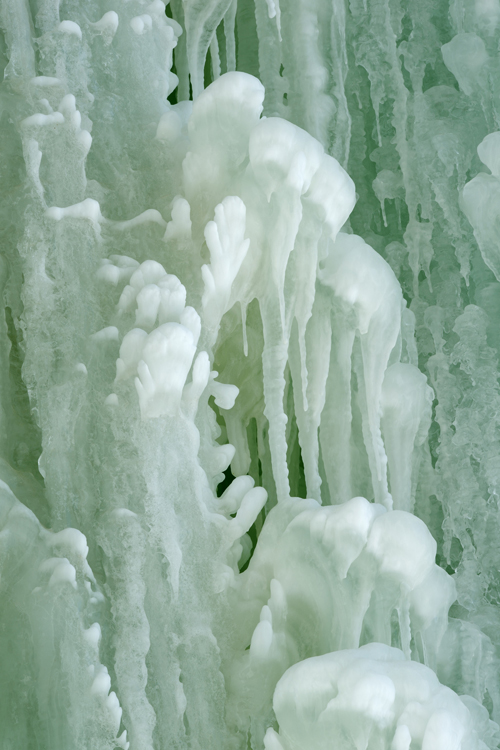Here are five facts about Michigan’s Grand Island ice caves, a natural phenomenon in Lake Superior and the subject of a Priority Mail Express stamp released last week.
1. Grand Island is marked by massive sandstone bluffs. While impressive in any season, the columns, which are 20-50 feet high, are especially dramatic in winter when lake water seeps into the crevices and caverns, forming magnificent ice curtains and icicles that hang like stalactites from ceilings, similar to underground caves. The area’s ice generally begins to form by mid-December and remains until early April.
2. The ice is colorful. Lake Superior’s fresh water creates ice curtains that are not only white but dazzle in hues of yellow, pink and blue. The lake’s waterfalls also freeze into stunning formations during wintertime.
3. At times, the ice caves are off limits. Depending on warm weather snaps and winter winds, the weather conditions can affect the caves. The National Park Service, which maintains the area, sometimes prohibits people from climbing the ice.
4. The caves have a long history. Grand Island was as attractive to early Native Americans and European explorers as it is to visitors today, according to the U.S. Forest Service. The island’s sandstone cliffs were shaped by centuries of climate influences, lush forests and white sand beaches.
5. Come spring, the area is home to wildflowers. From April to September, more than 500,000 wildflowers can be seen in their natural island settings. The Grand Island caves are accessible in the summer with sunset cruises and boat tours or by kayak.
